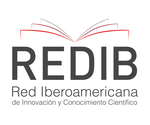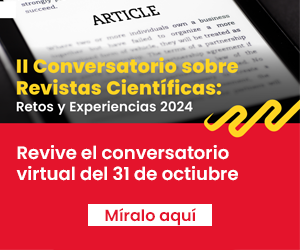Nivel de anticuerpos IgG, factor de necrosis tumoral y agotamiento de linfocitos T en personas vacunadas contra el SARS-CoV-2
DOI:
https://doi.org/10.20453/rmh.v35i3.5258Palabras clave:
Anticuerpos, citocinas, COVID-19, inmunoglobulina G, SARS-CoV-2, linfocitos TResumen
En la COVID-19, la inmunidad es fundamental. Poco se sabe de los mecanismos del factor de necrosis tumoral (TNF-α) y su capacidad de estimular la producción de anticuerpos anti-SARS-CoV-2. Asimismo, sobre la respuesta y agotamiento celular de los linfocitos T (LT). Objetivo: Evaluar el comportamiento, antes y después de la tercera dosis de vacunación, de los niveles de IgG (anti-spike), TNF-α y poblaciones linfocitarias incluyendo su agotamiento celular. Material y métodos: Se utilizó suero y células mononucleares de sangre periférica de sujetos con infección (G1, n=07) y asintomáticos (G2, n= 08 y G3, n=10) vacunados con la tercera dosis de la vacuna BNT162b2 (G1 y G2) o de ChAdOx1-S (G3). Se usó ELISA para determinar los niveles de IgG y TNF-α y citometría de flujo para determinar los niveles y el agotamiento celular de LT. Resultados: La IgG (anti-spike) antes y después de la tercera dosis no cambió. Se observó en G1 un aumento significativo de TNF-α después de recibir la tercera dosis. Los linfocitos totales (T, B y NK) mostraron una disminución significativa en G2 y, aunque los LT(CD3+) no variaron, en G3 sí hubo una disminución de LTCD4+ con aumento de PD-1+ y un aumento de LTCD8+ y PD-1+ antes y después de la tercera dosis, respectivamente. Se encontró una correlación positiva después de la tercera dosis en G3 entre IgG y CD4+PD-1+(p=0,034) y CD8+PD-1+(p=0,028), respectivamente. Conclusión: La respuesta humoral (IgG) e inflamatoria (TNF-α) no se modificó significativamente; la vacunación heteróloga (G3) incrementó los niveles de LT CD4+, una subpoblación que sostiene la inmunidad adaptativa antiviral. Adicionalmente, evito el agotamiento celular de LT.
Descargas
Citas
He F, Deng Y, Li W. Coronavirus disease 2019: What we know? J Med Virol. 2020 Jul 1;92(7):719–25.
Agencia EFE. Segunda ola lleva a Perú a rebasar los 100,000 fallecidos en pandemia respecto a años anteriores | PERU | GESTIÓN. [citado el 20 de junio de 2023]; Disponible en: https://gestion.pe/peru/segunda-ola-lleva-a-peru-a-rebasar-los-100000-fallecidos-en-pandemia-respecto-a-anos-anteriores-noticia/
Ministerio de Salud. Minsa declara el fin de la quinta ola de la COVID-19 en el país – CDC MINSA [Internet]. [citado el 20 de junio de 2023]. Disponible en: https://www.dge.gob.pe/portalnuevo/informativo/prensa/minsa-declara-el-fin-de-la-quinta-ola-de-la-covid-19-en-el-pais/
Ministerio de Salud. Minsa descarta una sexta ola de covid-19 en el país - Noticias - Ministerio de Salud - Plataforma del Estado Peruano [Internet]. [citado el 20 de junio de 2023]. Disponible en: https://www.gob.pe/institucion/minsa/noticias/741412-minsa-descarta-una-sexta-ola-de-covid-19-en-el-pais/
Ragab D, Salah Eldin H, Taeimah M, Khattab R, Salem R. The COVID-19 Cytokine Storm; What We Know So Far. Frontiers in Immunology | www.frontiersin.org [Internet]. 2020 [citado el 17 de junio de 2023];1:1446. Disponible en: www.frontiersin.org
Jose RJ, Manuel A. COVID-19 cytokine storm: the interplay between inflammation and coagulation. Lancet Respir Med. 2020; 8(6):e46–7. doi: 10.1016/S2213-2600(20)30216-2. Epub 2020 Apr 27.
Fara A, Mitrev Z, Rosalia RA, Assas BM. Cytokine storm and COVID-19: a chronicle of pro-inflammatory cytokines: Cytokine storm: The elements of rage! Open Biol. 2020;10(9) :200160. doi: 10.1098/rsob.200160. Epub 2020 Sep 23.
Sarzi-Puttini P, Giorgi V, Sirotti S, Marotto D, Ardizzone S, Rizzardini G, et al. COVID-19, cytokines and immunosuppression: what can we learn from severe acute respiratory syndrome? Clin Exp Rheumatol. 2020;38(2):337–42. doi: 10.55563/clinexprheumatol/xcdary. Epub 2020 Mar 22.
Gupta S, Bi R, Kim C, Chiplunkar S, Yel L, Gollapudi S. Role of NF-kB signaling pathway in increased tumor necrosis factor-α-induced apoptosis of lymphocytes in aged humans. Cell Death Differ [Internet]. 2005 [citado el 18 de junio de 2023];12:177–83. Disponible en: www.nature.com/cdd
Chen DP, Wen YH, Lin WT, Hsu FP. Association between the side effect induced by COVID-19 vaccines and the immune regulatory gene polymorphism. Front Immunol. 2022 Oct 26;13: 941497. doi: 10.3389/fimmu.2022.941497.
Abbas A, Lichtman A, Pillai S. Cellular and Molecular Immunology. 10Th ed. Philadelphia: Elsevier. 2021.
Jordan SC. Innate and adaptive immune responses to SARS-CoV-2 in humans: relevance to acquired immunity and vaccine responses. 2021 Jun; 204(3):310-320. doi: 10.1111/cei.13582. Epub 2021 Mar 4.
Long QX, Liu BZ, Deng HJ, Wu GC, Deng K, Chen YK. Antibody responses to SARS-CoV-2 in patients with COVID-19. Nat Med. Jun;26(6):845-848. doi: 10.1038/s41591-020-0897-1
Diao B, Wang C, Tan Y, Chen X, Liu Y, Ning L, et al. Reduction and Functional Exhaustion of T Cells in Patients with Coronavirus Disease 2019 (COVID-19). Front Immunol. 2020 May 1; 11:827. doi: 10.3389/fimmu.2020.00827.
Morris G, Bortolasci CC, Puri BK, Olive L, Marx W, O’neil A, et al. The pathophysiology of SARS-CoV-2: A suggested model and therapeutic approach. Life Sci. 2020 Oct 1; 258:118166. doi: 10.1016/j.lfs.2020.118166. Epub 2020 Jul 31.
Kaneko N, Kuo HH, Boucau J, Farmer JR, Allard-Chamard H, Mahajan VS, et al. Loss of Bcl-6-Expressing T Follicular Helper Cells and Germinal Centers in COVID-19. Cell. 2020;183(1):143-157.e13.
Rha MS, Shin EC. Activation or exhaustion of CD8 + T cells in patients with COVID-19. Cell Mol Immunol. 2021;18. Doi: 10.1038/s41423-021-00750-4
Alahdal M, Elkord E. Exhaustion and over-activation of immune cells in COVID-19: Challenges and therapeutic opportunities. Clin Immunol. 2022; 245:109177. Doi:10.1016/j.clim.2022.109177.
Shahbaz S, Xu L, Sligl W, Osman M, Bozorgmehr N, Mashhouri S, et al. The Quality of SARS-CoV-2–Specific T Cell Functions Differs in Patients with Mild/Moderate versus Severe Disease, and T Cells Expressing Coinhibitory Receptors Are Highly Activated. J. Immun. 2021 Aug 15;207(4):1099–111. Doi: 10.4049/jimmunol.2100446
Gurshaney S, Morales-Alvarez A, Ezhakunnel K, Manalo A, Huynh TH, Abe JI, et al. Metabolic dysregulation impairs lymphocyte function during severe SARS-CoV-2 infection. Commun Biol. 2023 Dec 1; 6(374). Doi: 10.1038/s42003-023-04730-4.
Li M, Guo W, Dong Y, Wang X, Dai D, Liu X, et al. Elevated Exhaustion Levels of NK and CD8+ T Cells as Indicators for Progression and Prognosis of COVID-19 Disease. Front. Immunol. 11:580237. doi: 10.3389/fimmu.2020.580237.
Haanen JB, Cerundolo V. NKG2A, a New Kid on the Immune Checkpoint Block. Cell. 2018 Dec 13;175(7):1720-1722. Doi: 10.1016/j.cell.2018.11.048.
Diao B, Wang C, Tan Y, Chen X, Liu Y, Ning L, et al. Reduction and Functional Exhaustion of T Cells in Patients with Coronavirus Disease 2019 (COVID-19). Front Immunol. 2020 May 1; 11:827. doi: 10.3389/fimmu.2020.00827.
Zheng M, Gao Y, Wang G, Song G, Liu S, Sun D, et al. Functional exhaustion of antiviral lymphocytes in COVID-19 patients. Cell Mol Immunol 2020 May, 17(5): 533–535. Doi: 10.1038/s41423-020-0402-2
Jafarzadeh A, Jafarzadeh S, Nozari P, Mokhtari P, Nemati M. Lymphopenia an important immunological abnormality in patients with COVID-19: Possible mechanisms. Scand J Immunol. 2021 Feb;93(2):e12967. doi: 10.1111/sji.12967. Epub 2020 Sep 14.
Mazzoni A, Salvati L, Maggi L, Capone M, Vanni A, Spinicci M, et al. Impaired immune cell cytotoxicity in severe COVID-19 is IL-6 dependent. J Clin Invest. 2020 Sep 1;130(9):4694-4703. doi: 10.1172/JCI138554.
Aguillón J, Escobar A, Ferreira F, Aguirre A, Ferreira L, Molina M, et al. Daily production of human tumor necrosis factor in lipopolysaccharide (LPS)-stimulated ex vivo blood culture assays. Eur Cytokine Netw. 2001 Mar;12(1):105-10.
Cheng ZJ, Huang H, Zheng P, Xue M, Ma J, Zhan Z, et al. Humoral immune response of BBIBP COVID-19 vaccination before and after the booster immunization. Allergy. 2022 Aug;77(8):2404-2414. doi: 10.1111/all.15271. Epub 2022 Mar 16.
Roy S, Coulon PG, Srivastava R, Vahed H, Kim GJ, Walia SS, et al. Blockade of LAG-3 immune checkpoint combined with therapeutic vaccination restore the function of tissue-resident anti-viral CD8+ T cells and protect against recurrent ocular herpes simplex infection and disease. Front Immunol. 2018 Dec 17; 9:2922. doi: 10.3389/fimmu.2018.02922.
Mei Q, Hu G, Yang Y, Liu B, Yin J, Li M, et al. Impact of COVID-19 vaccination on the use of PD-1 inhibitor in treating patients with cancer: A real-world study. J Immunother Cancer 2022 Mar;10(3):e004157. doi:10.1136/jitc-2021-004157.
Descargas
Publicado
Cómo citar
Número
Sección
Licencia
Derechos de autor 2024 Ivan Lozada Requena, Diego Paredes Inofuente

Esta obra está bajo una licencia internacional Creative Commons Atribución 4.0.
Los autores ceden sus derechos a la RMH para que esta divulgue el artículo a través de los medios que disponga. Los autores mantienen el derecho a compartir, copiar, distribuir, ejecutar y comunicar públicamente su artículo, o parte de él, mencionando la publicación original en la revista.

















